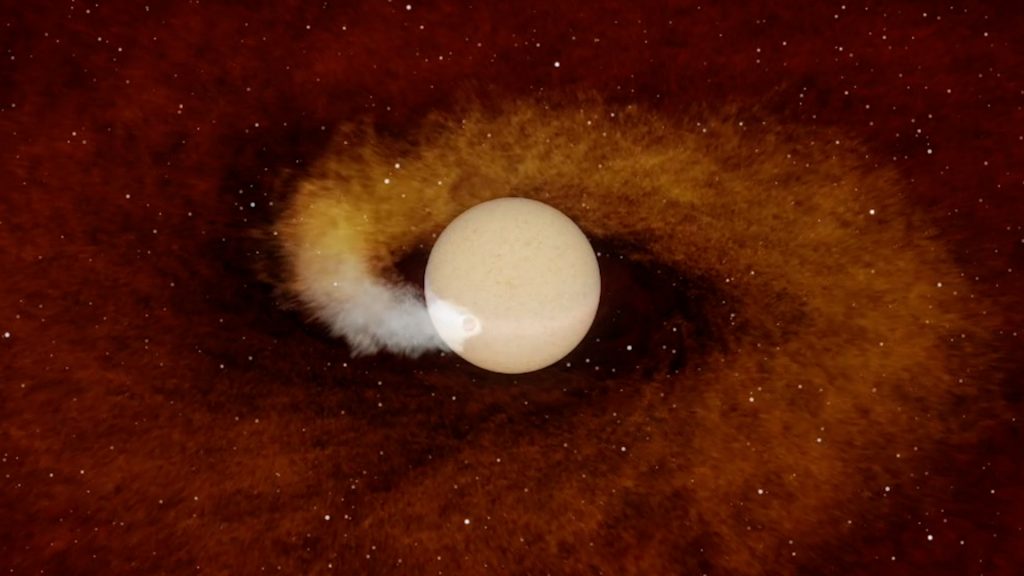A remarkable incident unfolded within the celestial realm, captivating astronomers and imparting a sobering realization. Located a staggering 12,000 light-years away, in the vicinity of the eagle-like constellation Aquila, a luminous star devoured a scorching planet resembling Jupiter in size. Astonishingly, the star’s luminosity intensified a hundredfold within a mere span of ten days, only to wane gradually afterward.
The occurrence, while not entirely unforeseen, presented a unique opportunity for scientists to bear witness to such a phenomenon as it transpired. Throughout the cosmos, aging stars nearing the culmination of their life cycles often consume neighboring planets and the surrounding matter, gradually depleting their fuel reserves. Nonetheless, this instance stands as the first direct observation of its kind.

The consequences go beyond mere scientific interest, shedding unsettling light on the possible future of our own planet. It serves as a sobering warning that Earth might someday share a similar destiny and become trapped beneath the gravity of a dying star. The lead researcher from MIT’s Kavli Institute for Astrophysics and Space Research, Kishalay De, articulated the unsettling idea that this occurrence gives us a momentary look into our own destiny in powerful terms. The sun is engulfing our planet as an extraterrestrial civilization 10,000 light-years away observes our solar system. They would see our star’s brightness suddenly increase as stuff is ejected from it, followed by the appearance of surrounding dust, and finally, a gradual return to its prior state.
These revelations compel deep introspection, underscoring the fragile tapestry that knits our existence within the vast cosmic fabric. They emphasize the urgency of comprehending stellar life cycles and the potential threats they pose to planetary systems. Armed with such knowledge, we may equip ourselves for the distant future, devising strategies to mitigate the eventual demise of our beloved planet.

While contemplating Earth’s potential entanglement with a stellar inferno may instill trepidation, it simultaneously kindles a sense of wonder and curiosity. It beckons us to plunge deeper into the enigmatic secrets enshrouding distant celestial bodies, fostering a profound appreciation for the intricate balance upholding life on our humble abode.
In the face of these grand cosmic ballets, we are reminded of the transient nature of our fleeting existence and the imperative to cherish and safeguard the irreplaceable world we call home. It compels us to revere the majesty of the cosmos, serving as a humbling reminder of our intricate connection with the universe at large.


